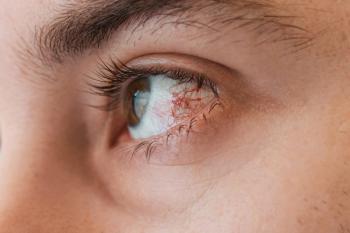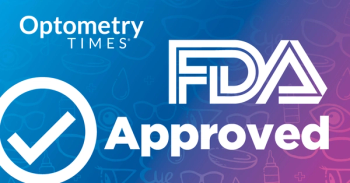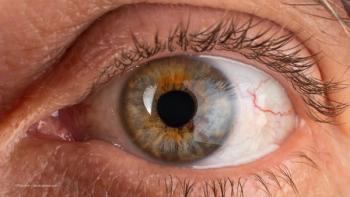
IKA 2024: Developing EpiSmart, a new method of cross-linking for keratoconus
Phase 3 trials continue to investigate the efficacy of EpiSmart, a new method of cross-linking that could be utilized in the treatment of keratoconus.
Roy Rubinfeld, MD, MA, discusses trial results investigating the efficacy of EpiSmart, a new form of cross-linking that can be utilized to treat keratoconus during this year's International Keratoconus Academy Keratoconus Symposium.
Video Transcript
Editor’s note - The following transcript has been lightly edited for clarity.
Roy Rubinfeld, MD, MA:
Hi, I'm Dr. Roy Rubinfeld, I spoke about the development of the new form of cross-linking, referred to as EpiSmart. I founded the company that created it, and no longer hold a formal position in that company. We started in 2008, and tried an astonishing number of ways to get riboflavin into the corneal epithelium, eventually succeeding, passing Phase 2 with largest Phase 2 trial ever, and not a single serious adverse event as a consequence of treatment. The technology is able to treat 2 eyes at the same time, no bandage contact lenses, 1 Tylenol and the next morning people are back at work and school. The most recent publication about it was 2228 subjects. So we're talking big numbers. It is a paradigm shift in the way keratoconus will be treated and it will fight the scourge of keratoconus, which is stealing vision from so many people worldwide in a way that is so much more patient friendly, doctor friendly, and simply much safer and effective, as shown in very large scale trials.
Patients come to me all the time and have for a long time saying, "Well, I heard there's this procedure that can be done for my keratoconus but they do this thing where they scrape off the front of your eye." And they say, "But I heard that you're nice, and you don't do that." And I don't do that. And that's what I've worked on, along with a lot of very smart people to get to a place where the risk benefit is completely different. Where, in other words, if you don't scrape off the epithelium, you don't have to wait for it to grow back. If you don't need opioids, that's a plus. If you get back to work instead of you know, a week or 2 later, that's a plus, and 2 eyes, same time, get it over with. It's a short treatment. I think it will be much more appealing to patients to be treated this way. Keratoconus patients usually are pretty savvy. Once they know they have it, they know they should do something about it. But they're very reluctant to have someone create a 10 millimeter corneal abrasion. They've had corneal abrasions, they're not really in the mood.
So it's now in Phase 3 trials across the United States. The trials are rapidly enrolling. And we're hoping to get this into the clinics all over the United States as quickly as possible and into the developing world where the prevalence of keratoconus can be as high as 7 to 10%. And so I think the impact goes well beyond the US. And our objective is to create a paradigm shift that will almost stamp out this common disease. In the current paradigm, doctors are forced to watch patients lose sight and get worse before they can treat them. In glaucoma, that's not how it works. In macular degeneration, that's not how it works. In almost no other disease is really that how it works. So these Phases 3 trials and treatments are designed to treat people as soon as when the diagnosis is made using advanced tech, so you don't have to watch people get worse, because that just doesn't make any rational common sense for doctors. And that enlarges the number of people who can be treated.
Newsletter
Want more insights like this? Subscribe to Optometry Times and get clinical pearls and practice tips delivered straight to your inbox.








































